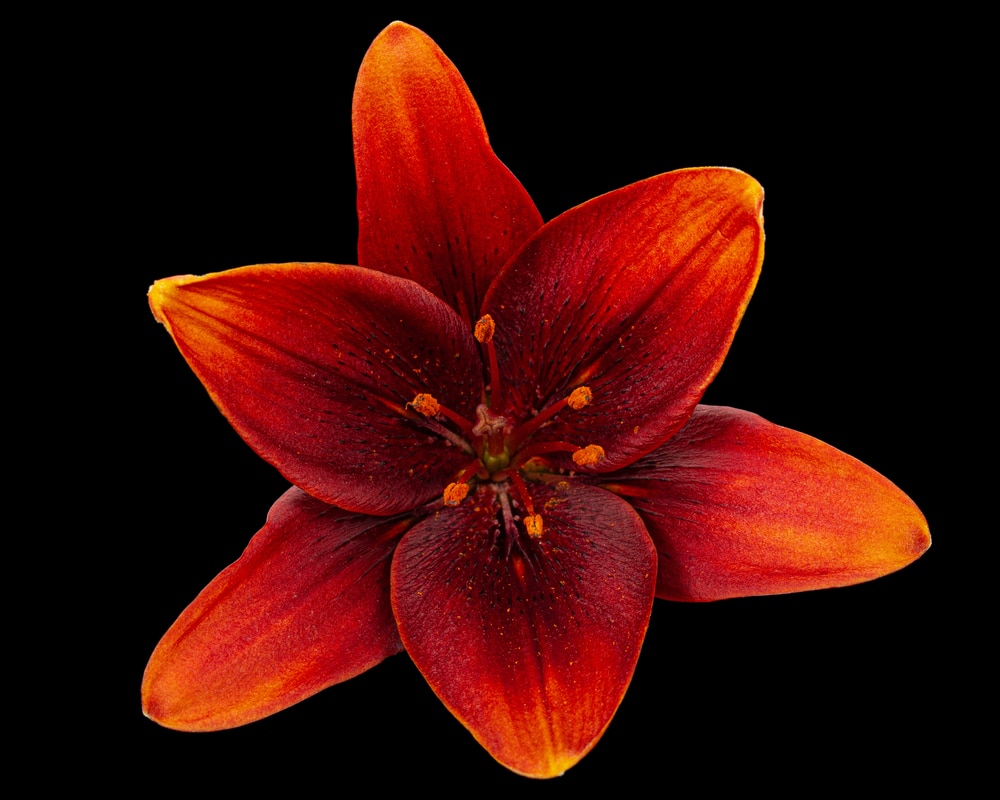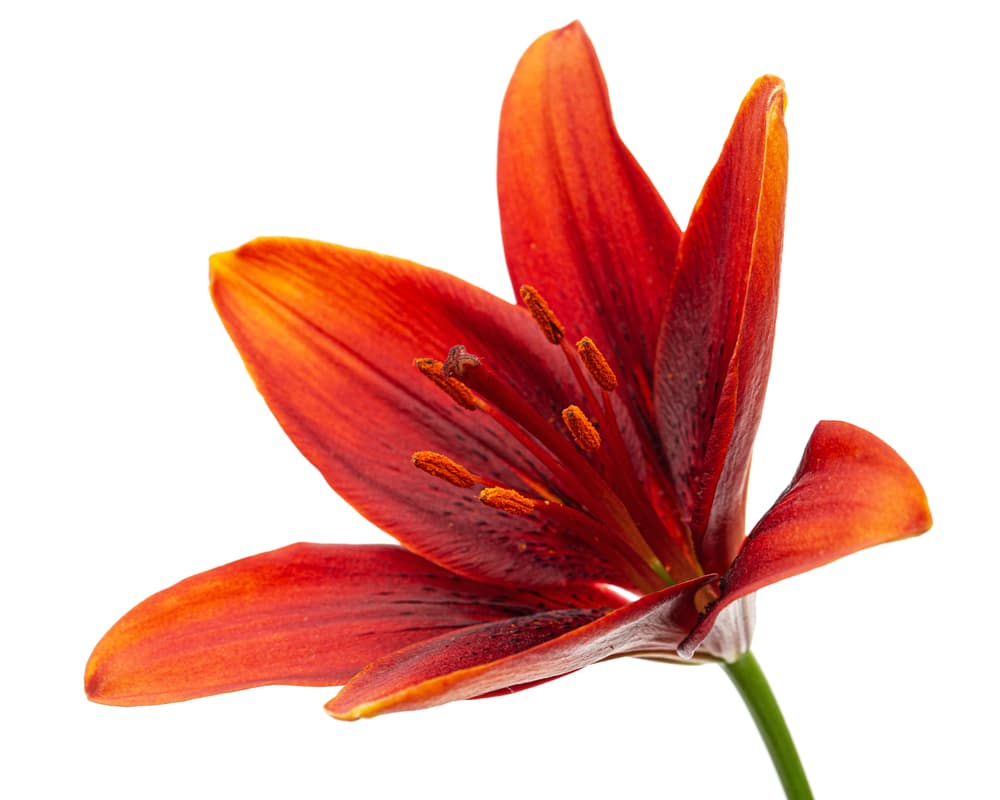Walking in your garden and only seeing green can be quite a bummer. With all the vegetables and herbs, it’s easy to forget about the flowers. But adding some color to your garden with Tiny Rocket Asiatic lilies will brighten things up!
If you want to add some splash of color to your garden, Asiatic lilies are the way to go. But before we get too excited, let’s take a step back and learn about the plant. This way, you’ll know exactly how to take care of your Asiatic lilies and make them last longer!
| Botanical Name | Lilium Asiatica |
| Common Name | Tiny Rocket Asiatic Lily |
| Plant Type | Perennial |
| Flower Color | Deep red with yellow stamens |
| Size When Mature | 15-18 inches |
| Bloom Time | Late Spring to Midsummer |
| Sun Requirements | Partial to Full Sun |
| USDA Hardiness Zones | 3 – 8 |
| Soil PH Range | 5.5 – 6.5 |
| Soil Type | Acidic, Well-draining, organic-rich soil |
| Water Needs | Medium |
| Native Area | Asia |
What You Need to Know About Tiny Rocket Asiatic Lily
The Tiny Rocket Asiatic Lily is a beautiful and fragrant flower that will add color and life to any garden. These lilies are native to Asia and can reach 15-18 inches in height. Its leaves are dark green and lance-shaped. Flowers pop out with the dark green foliage during late spring to midsummer. Additionally, the blooms are a deep red color with yellow stamens in the center, bringing an elegant and exotic look anywhere it’s planted.
However, be careful not to plant these lilies near any pathways or garden areas that receive a lot of foot traffic. The Asiatic Lily is poisonous if ingested; its pollen can cause skin irritation.
These stunning plants are not difficult to care for, so even new gardeners can easily grow them. In addition, they are quite drought-tolerant and can even survive a little neglect.
How to Care for Tiny Rocket Asiatic Lily
Here’s everything you need to know about growing and caring for a thriving Tiny Rocket Asiatic Lily:
Light
Placing the plant in partial shade to full sun is best. However, it is important to note that too much shade will result in fewer blooms. Having filtered light is ideal for the Asiatic Lily so that the leaves still get enough sunlight but are not scorched by the sun’s direct rays.
Water and Soil Needs
In terms of watering, the Asiatic Lily prefers occasional watering. Only watering when the topsoil is dry to the touch will suffice. Too much water can actually lead to problems such as root rot. Additionally, the plant does not like to have soggy roots, so ensure that the soil has proper drainage.
The Asiatic Lily also prefers slightly acidic soil with a pH range of 5.5-6.5. This can be easily achieved by adding some organic matter to the soil. Any will do, but compost, manure, or peat moss are all great options.
Temperature Requirements
These flowers are quite tolerant to both cold and heat. They can survive in temperatures as low as 50° to 80°F. Additionally, they can also handle hot weather and will continue to bloom even in the midst of a heatwave. Additionally, they are hardy in USDA zones 3-8.
Fertilizer
The best fertilizer to use on a Tiny Rocket Asiatic Lily is one that is slow releasing and preferably high in phosphorus and potassium. An all-purpose fertilizer can also do the trick. It is best to fertilize the plant in early spring and then once every month during the blooming season.
Common Diseases
Diseases are an unavoidable part of gardening. However, the Asiatic Lily is relatively resistant to most diseases. Some common diseases that can affect the plant are botrytis, bulb rot, and blue mold rot.
A plant can be affected by botrytis because of a fungal infection. The symptoms include gray or brown spots on the leaves as well as fuzzy growths. To avoid this issue, make sure to plant the Asiatic Lily in well-drained soil.
Bulb rot can occur when the bulbs are stored in wet or humid conditions. The symptoms of this disease include the bulbs turning brown or soft. To prevent bulb rot, make sure to store the bulbs in a cool and dry place.
Finally, blue mold rot is another disease that can affect Asiatic lilies. This disease is caused by a fungus called Phytophthora Cactorum. The symptoms include the leaves turning brown and the plant wilting. To avoid blue mold rot, make sure to plant the Asiatic Lily in well-drained soil.
Insect pests can also eat your lilies leaves and flowers.
Tiny Rocket Asiatic Lily Propagation
Propagating Asiatic Lily is usually done by bulb division which can be done during the spring or fall.
To propagate the plant, first dig up the bulbs and then divide them into smaller clumps. Each clump should have at least 3-5 bulbs. Plant the bulbs in well-drained soil and water them deeply. After a few weeks, you’ll see new growth appearing. From there, just provide the plant with the basic care requirements as usual.


